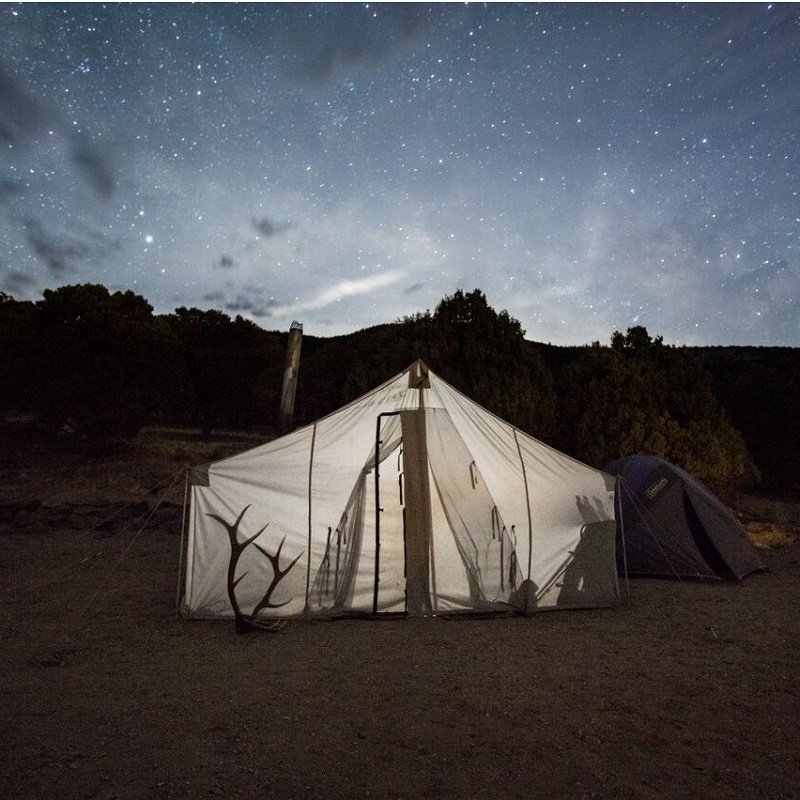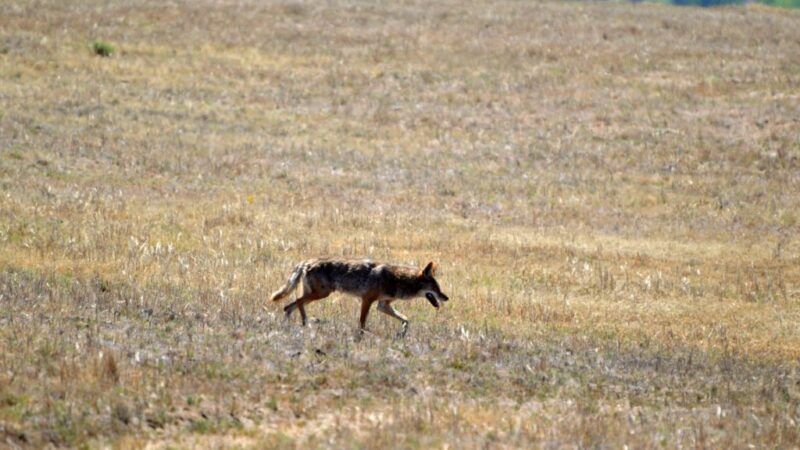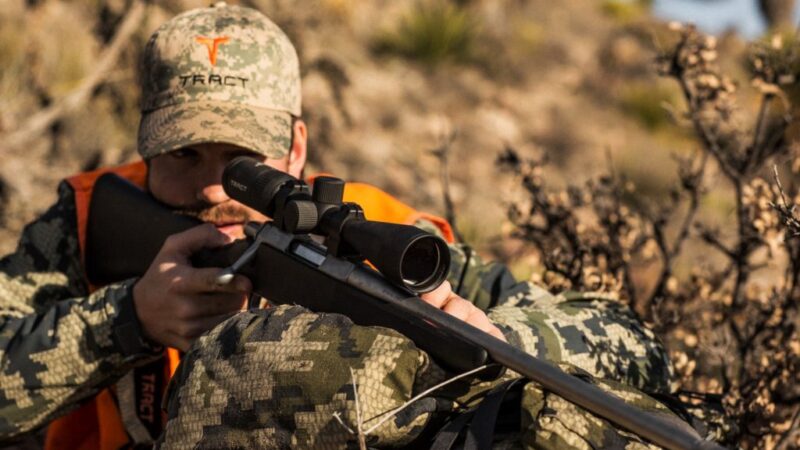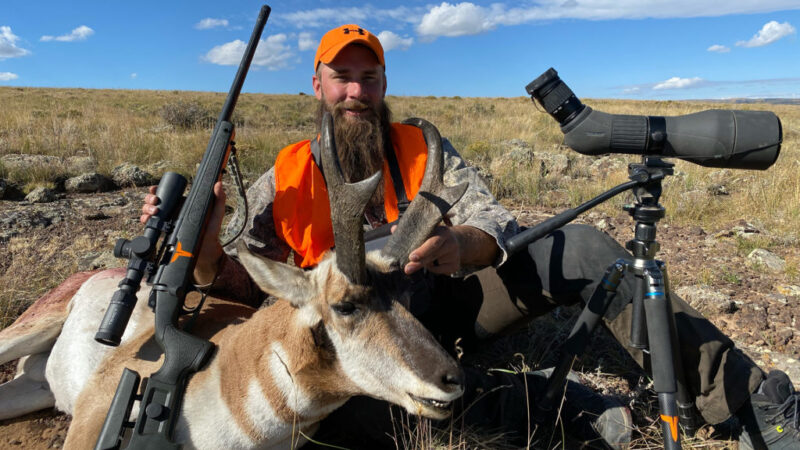Elk Hunting Tips for Beginners
Elk Hunting Tips for Beginners
*This is a guest post by Hampton Bourne.
Elk hunting tips for beginners can help increase the odds for those new hunters pursuing wapiti.
Elk Hunting Tips for BeginnersMy father raised me in the oak hardwoods of America’s southeast. As early as I can remember we spent countless days and nights chasing anything that would run, fly, or swim. Dad never killed or really hunted elk. So learning on my own has taught me how tough it can be to start hunting without a teacher.
This fall will be my fourth attempt to land a bull in the Rocky Mountains. My first hunt was an over-the-counter second-rifle hunt in Colorado’s vast public land. We never saw an elk, and in hindsight, we never gave ourselves a chance. After that season the failure created a determination. At one point I decided to become the most knowledgeable elk hunter in the country that had never seen an elk – an oddly unwell and reprehensible claim, not from arrogance but because most knowledgeable elk hunters had actually seen an elk!
The following two seasons the countless hours of research and homework paid off. Though I was still unable to fill my tag, on both hunts I had bulls in the crosshairs, though both without a clear shot. Each year has been an improvement on the previous. Hopefully this year will be yet another step closer. Below are my anecdotes and elk hunting tips for beginners chasing the same dream.
Hunt Types Elk Hunting
We are fortunate in the United States to have lots of access. Few other countries in the world allow hunters the same availability of public land. With that access comes several different types of hunts.
DIY Elk Hunting
Do-It-Yourself hunts are the most common. All a hunter needs is a tag and a corresponding weapon to venture in the mountains and have an experience. While the most accessible and least expensive, new hunters without knowledge stand little chance of filling that tag. To raise their odds, hunters should distance themselves from roads and must have knowledge of navigating the backcountry.
Additionally, DIY hunters improve their odds significantly by arming themselves with the proper gear – another potentially large financial investment. Because of the aforementioned reasons, DIY hunters are also statistically the least successful by a large margin. I would estimate that a proper tent, sleeping bag, water purification system, backpack, game bags, and everything else needed to venture on a true DIY backcountry hunt would cost around $5,000 for gear. While that number can vary wildly, the cost of a legitimate backcountry setup can be substantial.
Guided Hunts
Guided hunts offer an opposite approach. While guided hunts are more expensive, the knowledge and experience provided by a guide drastically increases your chances of success. The guide will also provide proper equipment and creature comforts that make life in the mountains much more enjoyable. For hunters wanting to check off the experience of hunting elk rather than making it an annual pursuit, the financial cost of hunting once with a guide is usually less than buying their own equipment. Expect to pay $5,000 for a guided hunt on public land and $6,000+ for private land hunts.

Drop Camps
Drop camp hunts offer a hybrid approach and are good middle ground for new hunters. Outfitters set up campsites, usually with canvas wall-tents, in good elk habitat. In many cases they will offer advice on where to hunt in the area around the camp.
Typically, the camps are set up in off-the-grid areas that are harder for walk-in hunters to access– an important component to finding elk. Horses are often used to pack hunters in and out, and once at the campsite, the outfitter will leave the hunter(s) until a predetermined date. If you’re interested in a drop camp hunt, be sure to sign up early. These hunts fill up quickly once tags are allotted. Drop camp hunts vary from $2,500-$4,000.
For those with their own camping gear and a location picked out, pack horses are a great way to get in and out of the woods. In most cases a hired pack train will be able to get you deep into the backcountry with all your gear and back to your vehicle with any harvested game. No gear is provided by the outfitter, but their ability to get hunters in deep and their ability to also pack out harvested game is critical. I think using a pack train is a great cost-effective way for new elk hunters wanting to give themselves a real chance. While outfitters vary in the cost of pack horses, they will usually pack you in and out for around $2,000 – $3,000.
Drawing a Tag
Once you determine the type of hunt that best fits your goals, acquiring a tag is the next step. Each state uses a different system for allocating tags. But in its most simple form, they use preference points, bonus points, or over-the-counter processes.
A preference point system is a process of allocating tags to people with the most preference points. If one hunter has one preference point and wants to hunt in a certain area, that hunter will have “preference” to the tag over hunters with zero points. If a hunter has ten preference points, they will be given a tag before all hunters with nine or fewer points and so on.
Every year in their annual hunt guides, each state publishes how many points were needed to draw certain areas in the previous years. Hunters can only acquire one point per year through either an unsuccessful draw, or by buying one once the draw has concluded. A hunter that has amassed ten tags has been unsuccessful ten years in the draw or has bought a point for ten years.
Bonus points are similar but still very different. A bonus point system operates like a raffle. The person with five bonus points will have five tickets in the raffle. A hunter with no previously accrued bonus points will only have one ticket in the raffle.
Over-the-counter (OTC) tags are sold on demand. Hunters without any points or without a successful draw can still hunt in OTC units by simply buying a tag. These units generally see the most hunting pressure because the number of tags sold is often uncapped and easy to acquire. For OTC hunts, I would strongly suggest a drop camp or a pack-in to help get away from the crowds.
How to Find Elk
While drawing a tag is difficult on its own, finding elk can be extremely challenging for new hunters. Elk behave differently in different times of the year, but their needs always revolve around four key items: food, water, shelter, and reproduction.
Early Season
In the early season before the rut, mature bulls separate into bachelor groups and begin shedding their velvet and stockpiling calories to prepare for the ensuing rut. Their primary needs are food, water, and shelter. Find all three, and you’ll get closer to finding a bull.
Cows typically congregate in large herds and also begin adding nutrients in advance of a hopeful pregnancy. In most cases both will be found towards the tops of the mountains that have rich grasses available, water and the shelter of rough terrain or dark timber nearby.
The Rut
The rut begins in mid to late September, and the needs shift. Bulls reduce the amount of time they spend grazing and spend more time tracking cows and defending their herd. Once a group of cows is found, a bull will begin forming his herd, which he will continuously breed as each cow comes into cycle. The cows will continue to graze regularly. Their desire for shelter is lessened, and bulls spend much of their days breeding cows and fighting with other bulls who try to move in on their herd.

Post Rut
Bulls are severely exhausted and malnourished after the rut. Their primary needs become rebuilding their strength through grazing and shelter to protect themselves during their weakened state. Often a bull will find a high, rough area that is close to food and water and stay in a very small radius until they have regained their strength.
Eventually, annual snowfalls will push elk to lower elevations. While some elk are permanent residents to a certain geographical area, many elk migrate miles to their winter habitat. Their needs for food, water, and shelter remain, but the snow makes it substantially more difficult to find food and evade predators – mostly humans and wolves.
When Snow Accumulates
The amount of snow that forces elk to lower elevations ranges drastically. In some areas a light snow can force elk lower. In other parts of the country a heavy dump is required to move elk. If heavily pressured, elk will move higher until it’s impossible to find food due to the snowpack.
I have heard from veteran hunters that three feet of snow is a barrier for elk to find food. While they may descend the mountain from less snowfall, hunting pressure can push them back higher. I use three feet as my line in the sand. Learn their needs and match their needs with the terrain, and you’ll significantly increase the likelihood that you find elk.
It’s important to remember that this is simply an overview from my personal experience. New DIY hunters harvest elk every year without following these lessons I have learned the hard way. As new hunters, it’s to our advantage to do everything we can to stack the odds in our favor. Furthermore, there are numerous companies that offer assistance for new and veteran hunters alike. Several companies offer consulting to help hunters draw a tag. Others, like Elk 101, offer online courses to help teach you more about the topics I have touched on.
One thing that my previous failures have done is remove the pressure I feel. I wanted so badly to be successful and overcome the odds. I have now learned to appreciate the hunt for the hunt. One of these years I’ll finish the race and come home with a trophy.
Regardless of your goals or experience, there are so many reasons to go elk hunting. I would strongly encourage you to make a trip into the mountains. Whether or not your statistical odds of harvesting an elk are low, the odds of experiencing something unforgettable are infinite. Best of luck to you and your pursuits and I hope these elk hunting tips for beginners will get you closer to bringing home the meat.











